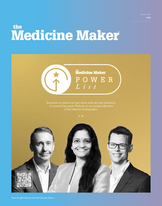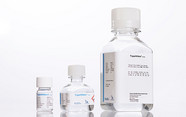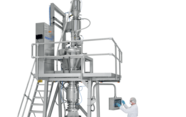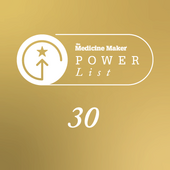Combatting the Side Effects of Treatments for Parkinson’s
Celon Pharma CEO hopes their new compound could be a potential breakthrough for Parkinson’s patients.
| 4 min read | Interview

A common and challenging side effect of long-term Parkinson’s treatment, Levodopa-induced Dyskinesia (LiD), results in involuntary, erratic movements after years of levodopa therapy. Around half of patients experience LiD within 5-10 years of treatment. The Parkinson’s community has developed a holistic method for analyzing the symptoms associated with LiD called the Unified Dyskinesia Rating Scale (UDysRS).
A study found that treatment with Celon Pharma’s once-daily oral treatment, CPL-36, resulted in a statistically significant and clinically meaningful reduction in the UDysRS total score in just four weeks compared to placebo. In 2024, CPL-36 also demonstrated positive phase II results in acute schizophrenia. Celon Pharma CEO Maciej Wieczorek explains what this could mean for Parkinson’s and schizophrenia patients…
What factors have led you to look for alternatives to existing treatments for Levodopa-induced Dyskinesia?
The standard treatment for this indication is amantadine, which demonstrates high efficacy but is associated with quite significant side effects – the most characteristic of which is hallucinations. Amantadine is also linked to numerous cholinergic effects, such as dry mouth and constipation. This spectrum of adverse effects result in a large proportion of patients either not tolerating the drug or having to discontinue treatment. Additionally, Parkinson’s disease is associated with an increased risk of psychosis. So, in reality, we have been exacerbating something that we often need to treat in Parkinson’s disease.
Over the past decade, many clinical programs have ended in failure, with phase II study results failing to separate from placebo. Among the most notable failures in the past several months are two high-profile programs, mesdopetam from IRLAB Therapeutics, and JM-010 from Korean company Bukwang and its European affiliate Contera. Both drugs failed to demonstrate efficacy in phase II for levodopa-induced dyskinesia in Parkinson’s disease.
What advantages could your compound offer?
CPL-36 distinguishes itself with a good safety profile and the fact that it is free from metabolic effects. The most common adverse effect observed consistently in clinical trials has been mild to moderate somnolence. It also has favorable pharmacokinetics, allowing for once-daily dosing, and demonstrates efficacy in key indications that form the basis for broad use in both psychosis and motor disorders.
I believe that it could be a potential breakthrough therapy in the indications we are developing and testing. In schizophrenia, we expect to claim a neutral metabolic profile which should remarkably distinguish it from other antipsychotics. In Parkinson’s, we feel most patients can be safely switched from amantadine. Given the clean safety profile of CPL-36 in LiD, we believe patients would prefer to initiate treatment with this drug over amantadine or other treatment strategies.
What are you allowed to tell us about the compound’s mechanism of action?
I can tell you that the inhibition of the PDE10A enzyme is a well-biologically justified molecular target, both in the context of schizophrenia and dyskinesias in Parkinson's disease. PDE10A modulates corticostriatal circuits by a balanced activation of direct and indirect pathways. The pathophysiology state of Parkinson’s disease is a complex neuronal network disturbance. Inhibition of PDE10A and modulation of activity of both pathways seems to counteract the imbalance striatal activity during LID.
What key endpoints or design changes might you consider based on the phase II data?
Based on the strength of the clinical effect observed in phase II studies, it appears that a replication of phase II in similar, slightly larger, acute clinical studies in each indication would be sufficient as part of a phase III program. Additionally the current standard requires that at least 100 patients have one-year exposure to the drug as part of an open-label, long-term observation. However, we plan to consult the US FDA regarding both the number of patients and the duration of drug administration in phase III.
How do you see the company’s business model evolving in the next five years?
With a current hybrid business model consisting of a generics division and an innovation division focused exclusively on developing new drugs, we have received market confirmation, including from the US, that we should move towards a clearer business model – in this case, separating the two. We are actively preparing for this transition with the goal of increasing the company’s value while aligning our investment risk profile with investor expectations. A potential and likely element of this approach is a NASDAQ listing, which we consider an important and realistic option within the next five years.
And what do you anticipate the treatment of neurological disorders to look like in this timeframe?
Over the next five years, the global market for neuropsychiatric disorder treatments is expected to undergo significant transformation. Targeted therapies, such as drugs modulating neural pathways (e.g. PDE10A inhibitors), gene therapies, and treatments based on artificial intelligence and neurotechnologies, are likely to play a key role.
Additionally, biomarker-based therapies will become increasingly important, enabling more personalized approaches to treating conditions such as schizophrenia, depression, and Parkinson’s disease.
The growing role of biotechnology and pharmaceutical companies investing in research on new drug mechanisms and alternative treatment strategies – such as psychedelics for treatment-resistant depression – will also shape the market.
From an economic perspective, the market is expected to expand rapidly, driven by a rising number of patients and increasing acceptance of innovative therapies. Greater access to cutting-edge drugs and treatments is anticipated, though challenges such as high treatment costs and the need for regulatory frameworks adapted to new technologies will remain.



















